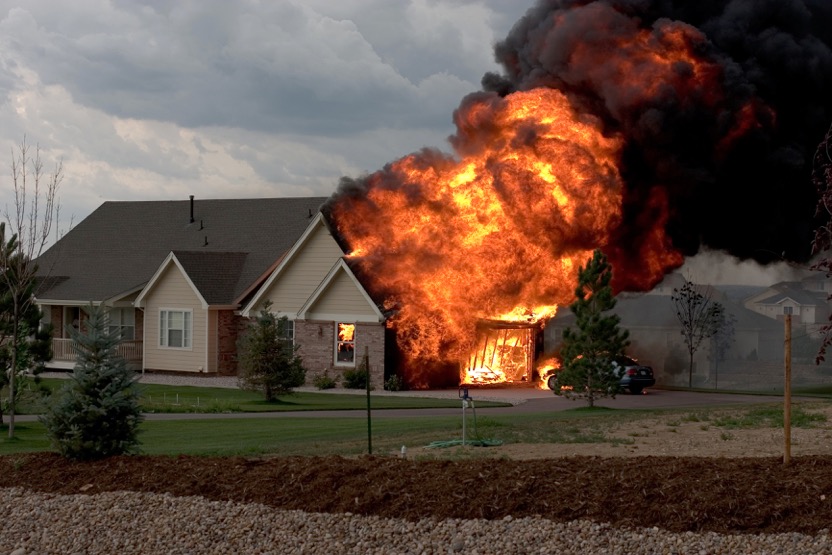Learn How Smoke Alarm Protection Differs
- Home
- Home Safety Tips
- How Do You Protect Your Family & Home From Fire?

- By: Celeste Hendrickson
- Fire Safety
- 0 Comments

Use the Right Smoke Alarms for Home Safety
As human beings, we tend to avoid topics that are scary, such as the possibility of fire in our homes. However, when it comes to home safety, this topic becomes a lot less scary with a little bit of attention. Simply by installing the right smoke alarms in the right places, you increase your home’s safety and that of the entire household significantly. But you can’t stop there because, if you install an alarm and then ignore it for years, it will not protect you in a critical moment. Fortunately, installing and maintaining your fire alarms does not require a lot of time.
What are the Right Smoke Alarms?
Many people are not aware that there is more than one kind of smoke detector out there. There are actually two different main kinds of fire protection – your standard smoke detectors, which are called ionization smoke alarms, and photoelectric smoke alarms. To understand how each works, view this ionization smoke alarm chart explaining the ionization process and one about photoelectric smoke alarms.
Both of these types of safety alert systems are designed for fire detection, but because they work in different ways, they do not work equally as well in any situation. Let’s break it down.
Ionization Fire Alarms
- Most common type
- Inexpensive
- Slightly more responsive to flaming fires which typically occur when occupants are awake
- Work well for “fast flame” fires that usually start from things like gas, grease, paper
- Respond 30 seconds faster to flaming fires than photoelectric alarms
Photoelectric Fire Alarms
- Unfortunately, not used as often
- Slightly more expensive, depending on specific model and features
- Much more responsive to smoldering fires which commonly happen when occupants are asleep
- Work well for catching the early stages of smoldering fire, typical of electrical fires
- Respond up to 15-30 minutes faster than ionization alarms for this type of fire
Are you thinking then why wouldn’t someone just create one that has both types of alarms? Well, they have and that’s where the human factor comes into play.
Homes With Smoke Alarms Receive a Warning, Right?
 The answer to that is not necessarily. Especially with ionization alarms, which tend to go off when you cook dinner with a little too much enthusiasm or even from the steam of a shower, human reactions can affect whether your home is prepared for the worst.
The answer to that is not necessarily. Especially with ionization alarms, which tend to go off when you cook dinner with a little too much enthusiasm or even from the steam of a shower, human reactions can affect whether your home is prepared for the worst.
A study conducted by Alaskan Public Housing states that at least 20% of ionization alarms are disabled in the first year after installation. This is because they trigger easier, annoying the home owner, who then disables it or takes out the battery. In fact, from 2007 to 2011, 47% of all smoke alarm failures happened because the battery was disconnected.
The problem alarms that use both ionization alert systems and the photoelectric encounter is that they are just as likely as straight ionization alarms to go off with no actual danger. Developers tried to overcorrect this issue, so some dual alarms require both sensors to go off before sounding the alarm, which reduces the benefits of each type.
So What is The Best Solution for Home Fire Protection?
The National Fire Protection Association has an answer for this question. The NFPA suggests installing both types of alarms in your home to have the best coverage. Smoke alarms should also be installed in all bedrooms and on each floor of the home, but not in the kitchen! Because no matter what type of alarm you are using, it will not work if you disable it!
Several states, like Massachusetts, and associations have declared that only the photoelectric alarms are worth even installing. However, any working smoke alarm is better than none when there are still over 5 million homes in the country without any kind of alert system or smoke detector.
Home Maintenance is Integral to Home Safety
Hopefully, you have just checked or replaced your smoke detector’s battery and ensured that everything is in working order with Daylight Savings Time, as is recommended. If you haven’t, North Twin Builders suggests doing so now to ensure your home’s safety because a well-maintained home equals a safer and more comfortable home.
Have home maintenance chores on your list that you don’t have time for, like roof repair or a bathroom remodel? Give North Twin Builders a call at 715-545-2510 and see for yourself how our quality makes the difference with professional construction services!
